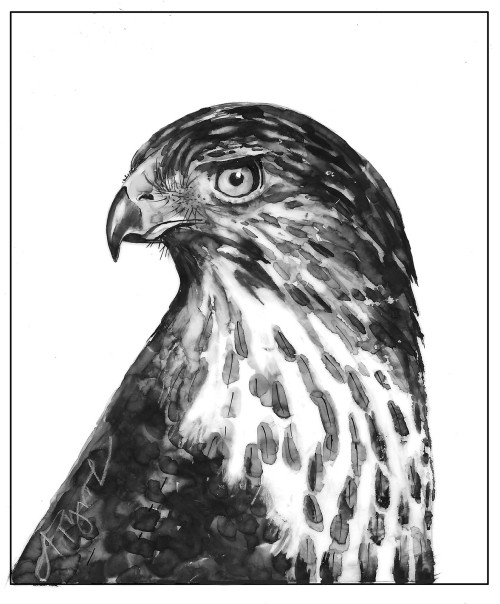
Once, when I was living in a house on the edge of a forest in Western Massachusetts, an early-spring storm blew in and left about a foot of snow in its wake. Worried about the birds, many of which had just returned to their northern breeding grounds, I spent the day replenishing the feeders and scattering extra seeds on the deck and in the yard. I watched through the sliding glass doors, as dozens of songbirds flitted in and out my view. It was a mesmerizing scene.
My reverie was broken, however, when a large bird torpedoed out of the woods and snatched one of the songbirds off the ground. It flew with such speed, I barely had time to register its presence. All of the birds, however, instantly dispersed, as if vaporized.
The incident unsettled me. It also left me feeling guilty for having created an artificially abundant feeding ground, which also turned out to be an ideal hunting ground. I was so focused on the songbird that had been killed that I made no effort to identify the predatory bird. Recently, however, I conveyed the story to Todd Katzner, a research biologist with the U.S. Geological Survey, and he had a pretty good idea of who the hunter was: a Cooper’s hawk.
These crow-sized birds are found year round in most of the United States, including southern New England. (Typically, however, they are not winter residents in northern New England.) As members of the accipiter genus, which also includes sharp-shinned hawks and goshawks, Cooper’s hawks have broad, round wings and long tails. Their top feathers are greyish, while their chest feathers are a ruddy brown. They have hooked beaks, red eyes, and a stern gaze.
Unlike hawks in the Buteo genus, such as red-tailed hawks, that tend to soar, accipiters’ flight pattern is a series of wing flaps, followed by a glide. They are adapted to hunting in thickly wooded areas and can move at lightning speed in pursuit of prey.
Is it possible I was visited by a sharp-shinned or goshawk that day? Yes, but less likely, according to Katzner. Cooper’s hawks tend to be more prevalent than the other two, and the bird I saw, however fleetingly, was crow-sized. Sharp-shinneds tends to be smaller and goshawks larger. Also, goshawks are especially secretive and elusive.
Though now widespread, Cooper’s hawks were once dwindling in numbers, thanks to the unregulated use of the pesticide DDT. As use of the chemical diminished, the birds rebounded and are now thriving, especially in urban areas. The resurgence of the Cooper’s hawk is great news; watching one dispatch a songbird, however, wasn’t great.
The hawk I encountered many years ago did not become a regular in my yard, in part, I believe, because I never again flooded the area with so much seed. But these hunters do take up residence around feeders, which raises the question: What should one do?
“Some recommend taking down your feeders for a couple of weeks and the hawk will look for food elsewhere,” said Jennifer McCabe, a postdoctoral research associate at the University of Wisconsin. But it’s not a recommendation she herself makes.
“It is part of the natural balance of predators and their prey. In fact, removing a natural predator can cause prey to lose their antipredator behavior skills. So my advice would be to leave the feeder up to allow for the natural predator-prey relationship to persist,” she added.
Though my heart still breaks when I think of that songbird lured to my backyard for what turned out to be its last moments, I agree with McCabe. As a bird lover I wanted all the birds caught in that snowstorm to survive – the songbird whose life was taken and the hawk that took it.


Discussion *